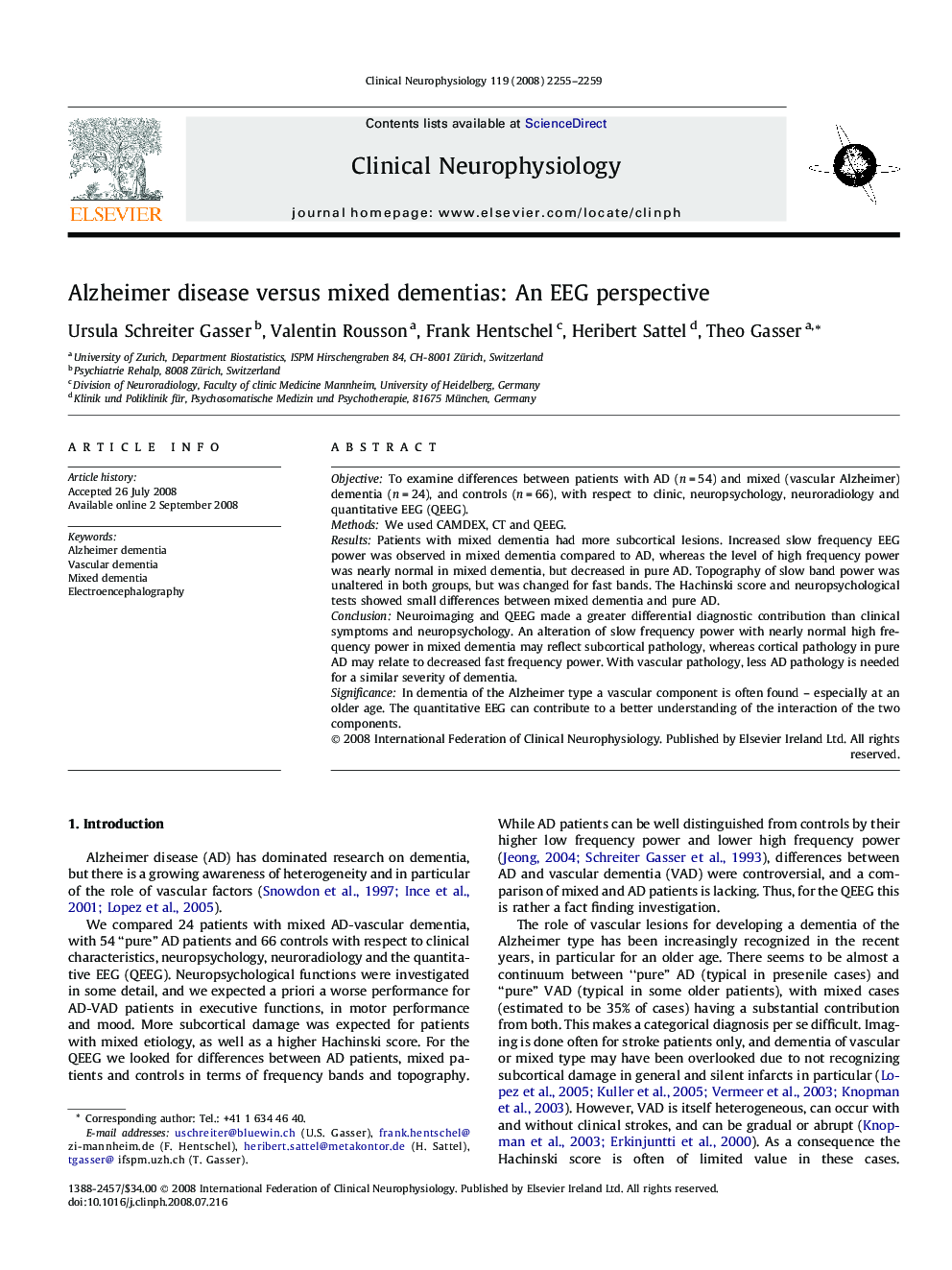| Article ID | Journal | Published Year | Pages | File Type |
|---|---|---|---|---|
| 3046459 | Clinical Neurophysiology | 2008 | 5 Pages |
ObjectiveTo examine differences between patients with AD (n = 54) and mixed (vascular Alzheimer) dementia (n = 24), and controls (n = 66), with respect to clinic, neuropsychology, neuroradiology and quantitative EEG (QEEG).MethodsWe used CAMDEX, CT and QEEG.ResultsPatients with mixed dementia had more subcortical lesions. Increased slow frequency EEG power was observed in mixed dementia compared to AD, whereas the level of high frequency power was nearly normal in mixed dementia, but decreased in pure AD. Topography of slow band power was unaltered in both groups, but was changed for fast bands. The Hachinski score and neuropsychological tests showed small differences between mixed dementia and pure AD.ConclusionNeuroimaging and QEEG made a greater differential diagnostic contribution than clinical symptoms and neuropsychology. An alteration of slow frequency power with nearly normal high frequency power in mixed dementia may reflect subcortical pathology, whereas cortical pathology in pure AD may relate to decreased fast frequency power. With vascular pathology, less AD pathology is needed for a similar severity of dementia.SignificanceIn dementia of the Alzheimer type a vascular component is often found – especially at an older age. The quantitative EEG can contribute to a better understanding of the interaction of the two components.
